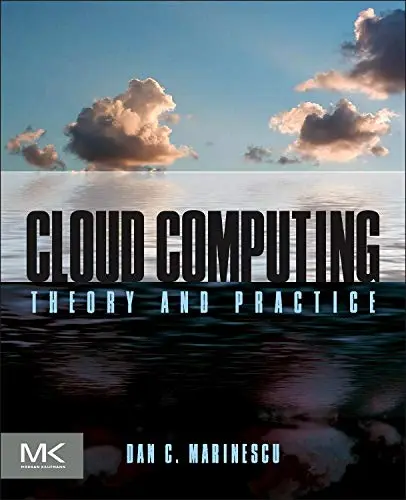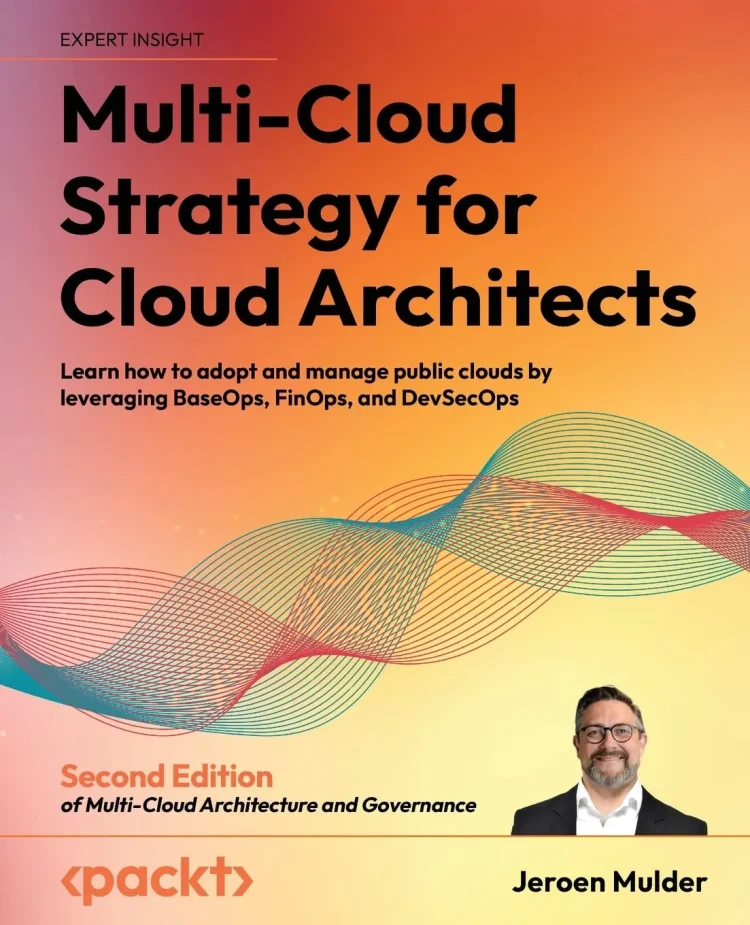The rise of multi-cloud environments has redefined how organizations manage their IT infrastructure. Now, businesses can be more flexible and reliable and save money using multiple cloud service providers.
In this blog, we will discuss strategies for effective multi-cloud management, key challenges, and future trends.
Table of Contents
Why Multi-Cloud?
Organizations are increasingly adopting multi-cloud strategies to:
- Avoid Vendor Lock-In: Businesses can lower the risks of relying on just one vendor by splitting their workloads among several providers. The reliance on a single vendor can result in dependencies that may restrict flexibility and increase costs over time. Multi-cloud strategies enable enterprises to shift effortlessly and avoid getting locked into a single provider’s ecosystem.
- Enhance Agility: Different cloud providers offer specialized services specific to certain workloads. For instance, some providers excel in machine learning tools, while others specialize in high-performance computing. This allows businesses to choose the services most suitable for their specific needs, promoting operational efficiency and innovation.
- Optimize Costs: Multi-cloud setups allow for intelligent cost management by leveraging price differences across providers. Organizations can allocate workloads dynamically, using analytics to choose the most economical options while maintaining optimal performance. This approach reduces unnecessary expenses and maximizes return on investment.
- Improve Resilience: Outages and disruptions can significantly impact business continuity. Businesses can ensure redundancy and fail-over capabilities by distributing resources across multiple clouds. This resilience minimizes downtime and maintains service delivery even when individual providers face technical challenges.
Key Challenges in Multi-Cloud Management
While multi-cloud strategies offer many benefits, they also pose significant challenges:
Interoperability Issues
Problem: Inconsistent APIs, data formats, and service models hinder seamless integration. Differences between providers require substantial configuration effort, leading to inefficiencies.
Solution: To bridge gaps, use middleware solutions, such as API gateways and integration platforms. Standardized interfaces, like OpenAPI specifications, promote easier integration across platforms.
Data Consistency and Portability
Problem: Variances in storage architectures, transfer mechanisms, and access protocols can lead to fragmented data ecosystems. These inconsistencies hinder real-time analytics and complicate cross-platform operations.
Solution: Adopt cloud-agnostic storage and implement policies for data normalization. Leveraging tools like data lakes or hybrid storage solutions can streamline consistency. Use automated migration tools to ensure portability.
Security and Compliance
Problem: Multi-cloud setups increase the surface area for potential security breaches. Diverse compliance requirements across regions further complicate governance.
Solution: Implement advanced security frameworks incorporating identity and access management (IAM), encryption, and zero-trust models. Automate compliance checks using AI-driven governance tools, ensuring adherence to industry standards like GDPR or HIPAA.
Governance
Problem: Monitoring policies, usage patterns, and billing across providers becomes complex without centralized control, potentially leading to inefficiencies or overspending.
Solution: Establish centralized governance platforms that integrate monitoring tools, such as AWS CloudWatch or Google Operations Suite. Use AI-powered dashboards to provide real-time insights and enforce policy adherence dynamically.
Cost Management
Problem: Without visibility across all cloud platforms, costs can escalate unpredictably due to duplicated resources or underutilization.
Solution: Employ cloud cost management tools, like FinOps practices, to gain insights into expenditure: Automate budget alerts and resource optimization recommendations to maintain cost efficiency.

Core Strategies for Success
Cloud Orchestration
Tools like Kubernetes, Terraform, and Ansible are pivotal for orchestrating multi-cloud operations.
Kubernetes enables application containerization, making deployment across cloud platforms seamless. Terraform streamlines infrastructure provisioning through its infrastructure-as-code approach, while Ansible automates configuration management and application deployment.
These tools enhance scalability, reduce manual errors, and improve operational efficiency.
Optimization Techniques
Optimization techniques focus on maintaining a balance between performance and costs. Dynamic workload placement assigns tasks to the optimal resources based on real-time performance metrics.
Auto-scaling dynamically adjusts resources to meet varying demands, ensuring optimal utilization without overspending. Predictive cost modeling leverages data analytics to expect expenses and optimize budget allocation proactively.
Centralized Governance
Centralized governance integrates tools and frameworks to simplify oversight across multiple providers. Organizations can monitor compliance, resource usage, and policy enforcement by unifying dashboards in real-time.
Platforms like AWS Organizations or Azure Policy help ensure that security, compliance, and budget management are the same in all cloud environments.
Emerging Trends
Edge Computing Integration
As businesses increasingly prioritize latency-sensitive applications, edge computing has become essential.
Edge computing reduces latency and improves real-time decision-making by processing data closer to where it comes from.
Integrating edge nodes with multi-cloud architectures ensures seamless data flow and operational efficiency for IoT and other high-demand scenarios.
Serverless Architectures
Serverless architectures eliminate the need for infrastructure management by enabling developers to focus solely on application logic.
Businesses using functions-as-a-service (FaaS) models like AWS Lambda or Google Cloud Functions can save money and grow.
These architectures complement multi-cloud setups by providing flexibility in deploying functions across platforms as needed.
AI-Powered Management
Artificial Intelligence (AI) is transforming multi-cloud management. AI-driven tools analyze patterns in resource utilization, optimize workload distribution, and provide predictive maintenance insights.
Automated compliance monitoring and anomaly detection enhance security and governance, ensuring efficient operations across complex multi-cloud environments.
Practical Tips for Implementation
Start by identifying specific goals, such as cost optimization, performance improvement, or increased resilience.
Map workloads to the most suitable cloud providers based on their strengths. Clearly define governance structures and metrics to measure success.
Use containerization tools like Docker to enhance portability and consistency across platforms.
Container orchestration frameworks, such as Kubernetes, simplify deployment and scaling across multi-cloud environments,
ensuring seamless provider transitions.
Deploy robust monitoring tools to track performance, resource utilization, and costs across providers. Services like Prometheus, Grafana, or native cloud monitoring tools provide valuable insights and help identify inefficiencies in real-time. Automate alerts for anomalies to address issues proactively.
Regularly train your IT teams on emerging multi-cloud technologies, best practices, and security protocols. Encourage certifications in relevant tools like Kubernetes or Terraform to ensure your team stays ahead of the curve. Building a knowledgeable team reduces implementation risks and ensures smoother operations.
Continuously adapt strategies based on evolving needs and performance data. Agile methodologies allow for incremental improvements, which help businesses improve their multi-cloud strategy and adapt to changing customer needs.

Use Cases for Multi-Cloud Strategies
- E-commerce: Online retailers rely on multi-cloud setups to handle massive traffic spikes during sales events.
By using high-performance databases for transactional data and leveraging CDNs for static content,
businesses ensure fast, reliable shopping experiences for customers worldwide. - Healthcare: Healthcare organizations store sensitive patient data in compliant local clouds while utilizing global clouds
for data analysis and research on a larger scale. This approach balances privacy concerns with the need for innovation in medical research. - Media and Entertainment: Companies distribute rendering workloads to high-performance clouds while storing completed projects
in cost-effective storage solutions. For live-streaming, edge servers ensure minimal latency, enhancing the viewer experience. - Financial Services: Banks and financial institutions use multiple cloud platforms to optimize transaction speeds,
maintain compliance across jurisdictions, and ensure data redundancy for disaster recovery.
Tools for Multi-Cloud Management
- CloudHealth by VMware: Offers advanced analytics for cost tracking, security assessments, and resource utilization across cloud environments,
helping organizations make data-driven decisions. - RightScale (Flexera): This platform enables comprehensive resource management, automation, and governance, ensuring organizations maintain control over their multi-cloud deployments.
- IBM Multi-Cloud Manager: Tailored for Kubernetes clusters, this tool simplifies the management of containerized applications across diverse clouds, ensuring consistency and efficiency.
- Azure Arc and Google Anthos: Provide unified control over hybrid and multi-cloud environments, allowing seamless deployment and management of workloads across platforms.
Cost Optimization Best Practices
Tools like AWS Cost Explorer and CloudCheckr provide detailed insights into cloud expenditure, enabling organizations to identify cost drivers and optimize spending.
Schedule non-critical workloads, such as batch processing or backups, during off-peak hours to take advantage of lower rates.
Regular checks of cloud resources help find instances that aren’t being used or used enough. Turning off these tools can save a lot of money.
Leverage spot instances for short-term workloads or non-critical operations. These discounted resources offer substantial cost savings while maintaining efficiency.
Security in Multi-Cloud
Zero Trust Models:
Ensure all your multiple clouds follow the “never trust, always verify” rule. This means checking every entry request, no matter where it comes from, and watching what users do. When used with micro-segmentation, it isolates tasks to lessen the effect of potential breaches.
IAM Tools:
Advanced identity and access management platforms, such as Okta or Azure AD, let you control user rights from one place. Features like multi-factor authentication (MFA) and conditional access policies improve total security by ensuring that only allowed users can access essential resources.
Data Encryption:
Cloud-native encryption tools or third-party solutions like HashiCorp Vault should always secure data, whether it’s at rest or in transit. Even if intercepted during transmission, end-to-end encryption keeps your private data safe.
Regular Audits:
Conduct frequent security audits to evaluate the effectiveness of implemented measures. Penetration testing, vulnerability assessments, and compliance checks against frameworks like SOC 2 or ISO 27001 help identify and mitigate risks proactively.
Success Stories in Multi-Cloud Implementation
Netflix:
By leveraging AWS for its core video delivery services and Google Cloud for analytics, Netflix ensures seamless content streaming worldwide. The company’s multi-cloud strategy balances performance and cost while maintaining operational flexibility.
HSBC:
The global banking giant uses AWS, Azure, and Google Cloud to distribute workloads, improving resilience and adhering to complex regulatory requirements. This setup enhances disaster recovery and reduces dependency on a single provider, ensuring business continuity.
Spotify:
Spotify optimizes user experiences by employing multiple clouds for different functions. Google Cloud performs data analytics, while AWS hosts and delivers content, thus ensuring high availability and scalability during peak usage times.
Future of Multi-Cloud
Quantum Computing
Adding quantum computing to multi-cloud environments will change many fields requiring complex simulations and cryptographic operations.
Multi-cloud quantum setups will enable organizations to tap into quantum processing capabilities offered by different providers. This approach will benefit material science, financial modeling, drug discovery, and artificial intelligence.
As quantum computing becomes more accessible, organizations will leverage the unique strengths of various quantum-enabled cloud platforms for optimized results.
Decentralized Clouds
Blockchain-based decentralized cloud platforms are gaining traction for their ability to enhance privacy, data security, and redundancy. Unlike traditional centralized cloud services, decentralized clouds distribute data across multiple nodes, eliminating single points of failure.
This method ensures that data is more securely stored and less likely to be stolen during cyberattacks. Businesses and startups are investigating these systems to meet the growing demand for openness and trust in data storage and processing.
Sustainability
With climate change becoming a global concern, sustainability is a significant focus for the future of multi-cloud strategies.
Cloud providers are increasingly adopting green energy solutions, such as renewable power for data centers and energy-efficient cooling systems.
Organizations are also prioritizing workload distribution to data centers with lower carbon footprints. Multi-cloud setups are significant for protecting the environment because they let businesses choose service providers committed to eco-friendly practices.
This ensures they follow environmental laws and their corporate social responsibility goals.
Common Pitfalls to Avoid
- Lack of a Unified Strategy
Mistake: Jumping into multi-cloud without clear goals or governance policies.
Solution: Develop a comprehensive strategy that aligns with business goals, including workload allocation, cost optimization, and compliance management. - Underestimating Security Complexities
Mistake: Assuming security practices from one cloud provider apply to all.
Solution: Customize security frameworks for each provider, ensuring compatibility with multi-cloud security tools like IAM and encryption systems. - Ignoring Interoperability
Mistake: Selecting providers without considering API compatibility or data portability.
Solution: Choose vendors that support open standards and ensure tools for middleware or orchestration are in place. - Overlooking Cost Management
Mistake: Losing track of spending across multiple providers, leading to unexpected expenses.
Solution: Use centralized cost management tools and regularly audit cloud usage. - Failure to Train Teams
Mistake: Assuming existing IT skills suffice for managing multi-cloud environments.
Solution: Invest in team training in multi-cloud tools and best practices.
Checklist for Implementation
- Define Objectives: Identify key goals, such as cost savings, improved performance, or resilience.
Map workloads to appropriate cloud providers based on strengths. - Choose Providers: Evaluate providers for features, compliance, pricing, and service-level agreements (SLAs).
Consider hybrid or specialized cloud services for unique needs. - Prepare Infrastructure: Leverage containerization and orchestration tools like Kubernetes to ensure portability.
Establish secure connections between on-premises and cloud systems. - Set Up Governance: Implement policies for access control, compliance, and cost management.
Use tools like Azure Policy or AWS Organizations for centralized governance. - Monitor and Optimize: Deploy monitoring tools to track performance and costs.
Continuously optimize workload allocation based on analytics.
Comparative Analysis of Leading Multi-Cloud Providers
A comparative look at top providers can help businesses select the right combination:
| Feature | AWS | Google Cloud | Microsoft Azure | IBM Cloud | Oracle Cloud |
|---|---|---|---|---|---|
| Strengths | Wide range of services, global reach | AI/ML and big data analytics | Seamless integration with Microsoft tools | Enterprise-grade AI and hybrid solutions | Robust database and ERP integration |
| Pricing | Pay-as-you-go, cost calculators available | Competitive pricing for data analytics | Discounts for hybrid setups | Competitive pricing for enterprise clients | Cost-effective for database-heavy workloads |
| Compliance | Comprehensive, supports HIPAA, GDPR | Industry-specific certifications | Broad compliance coverage, hybrid compliance tools | Leader in data security and privacy | Optimized for Oracle database users |
| Ease of Use | Flexible but complex for beginners | Developer-friendly interface | Integrated with Microsoft ecosystem | Focused on enterprise IT professionals | Specialized in Oracle ecosystem users |
| Best Use Cases | Enterprises with diverse needs, scalability | Data-driven applications, startups | Organizations using Microsoft products | Industries needing advanced AI/ML and hybrid cloud solutions | ERP-heavy enterprises, particularly Oracle users |
| Support for Multi-Cloud | Strong tools like Outposts, ECS Anywhere | Anthos for hybrid/multi-cloud | Azure Arc for hybrid/multi-cloud | Red Hat OpenShift for hybrid environments | Multi-cloud integration for Oracle databases |
Resources
Explore these valuable resources to deepen your understanding of multi-cloud strategies, tools, and best practices.
📚 Articles & Guides
- Google Cloud’s Multi-Cloud Strategy – Learn how Google Cloud enables multi-cloud solutions.
- Netflix’s Cloud Strategy with AWS – Case study on how Netflix uses AWS for scalability.
- Microsoft Azure Cloud Adoption Framework – Best practices for adopting cloud at scale.
- What is Vendor Lock-In? – Understanding the risks and how to avoid them.
- IBM Cloud’s Multi-Cloud Strategy – IBM’s insights on hybrid and multi-cloud environments.
🔧 Tools & Services
- CloudHealth by VMware – Cloud cost management and security.
- Flexera (RightScale) – Multi-cloud governance and optimization.
- Prometheus – Open-source monitoring for multi-cloud infrastructures.
- AWS Cost Explorer – Track and manage cloud costs effectively.
- Azure Arc – Manage hybrid and multi-cloud environments.
🎓 Certification & Learning
- Kubernetes Certification (CKA) – Learn Kubernetes for cloud orchestration.
- Terraform Certification – Master infrastructure as code.
- Introduction to Cloud Computing – Fundamentals of cloud strategies.
🚀 Before You Go:
- 👏 Found this guide helpful? Give it a like!
- 💬 Got thoughts? Share your insights!
- 📤 Know someone who needs this? Share the post!
- 🌟 Your support keeps us going!
💻 Level up with the latest tech trends, tutorials, and tips - Straight to your inbox – no fluff, just value!














